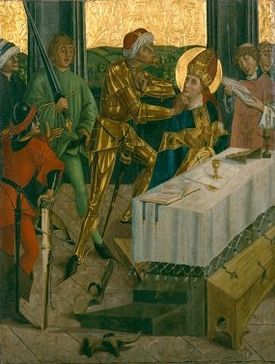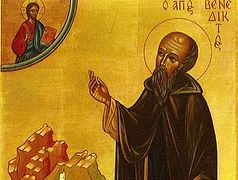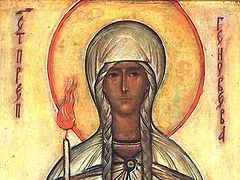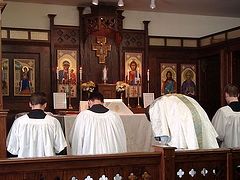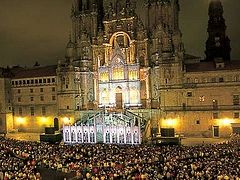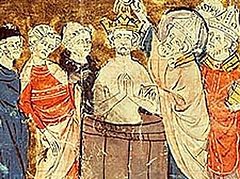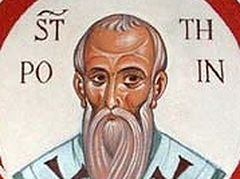Emmeram came from the land of the Franks. He was born early in the 7th Century in Poitiers. He received an excellent education and became a priest, and later a bishop. Emmeram left his homeland and went to preach the Christian Faith in the neighboring land of the Avars, now known as Hungary. His path to the land of the Avars took him through Regensburg. There, Teodo I, Duke of Bavaria received the Holy Hierarch with great honor, and persuaded him to stay in that city on the Danube. It is known that upon arriving in Bavaria, Emmeram immediately consented to engaging in missionary work there, as Christianity had not yet become firmly established in the land.
In addition to preaching, St. Emmeram extirpated pagan customs, and established churches in Regensburg and its surrounding area. In the three years he spent in the city, St. Emmeram was regarded with great honor by the faithful of Bavaria. Following the death of his patron, Pepin of Herstal, St. Emmeram left for Rome. At the same time, Uta, daughter of Bavarian Duke Teodo I accused Emmeram of seducing her and getting her with child. Her brother Lantpert (or, according to other sources, Landfried) kidnapped him along the old “Roman” road between Salzburg and Augsburg, and dealt with him cruelly. According to tradition, the hierarch’s traveling companions Vitalis and Wolflete tried to get the tortured bishop as quickly as possible to Aschheim, but along the way, Emmeram reposed. A chapel was built in his memory at the place of his death, Kleinchendorf, now known as Feldkirchen, near Munich. Another chapel, is in Aschheim at the place where St. Emmeram was originally entombed. For the 40 days the Saint’s remains rested there, rain fell constantly
St. Emmeram’s innocence was soon established, and Duke Teodo decided to bring his relics to Regensburg. This was accomplished by Bishop Gaubald, who entombed his remains with due pomp at the Monastery of St. George. Later, in the year 740, they were transferred to a church especially constructed to house them. In time, around that church, there arose the renowned Benedictine Abbey of St. Emmeram, which - 7 - provided Bavaria with many holy monks and spiritual strugglers. Abbey records reveal that in 1642 the Church of St. Emmeram suffered considerable damage in a fire; yet the flames did not touch the remains of the Saint.

